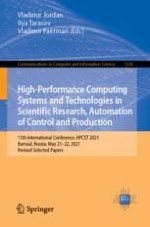2022 | Buch
High-Performance Computing Systems and Technologies in Scientific Research, Automation of Control and Production
11th International Conference, HPCST 2021, Barnaul, Russia, May 21–22, 2021, Revised Selected Papers
herausgegeben von: Vladimir Jordan, Ilya Tarasov, Vladimir Faerman
Verlag: Springer International Publishing
Buchreihe : Communications in Computer and Information Science
